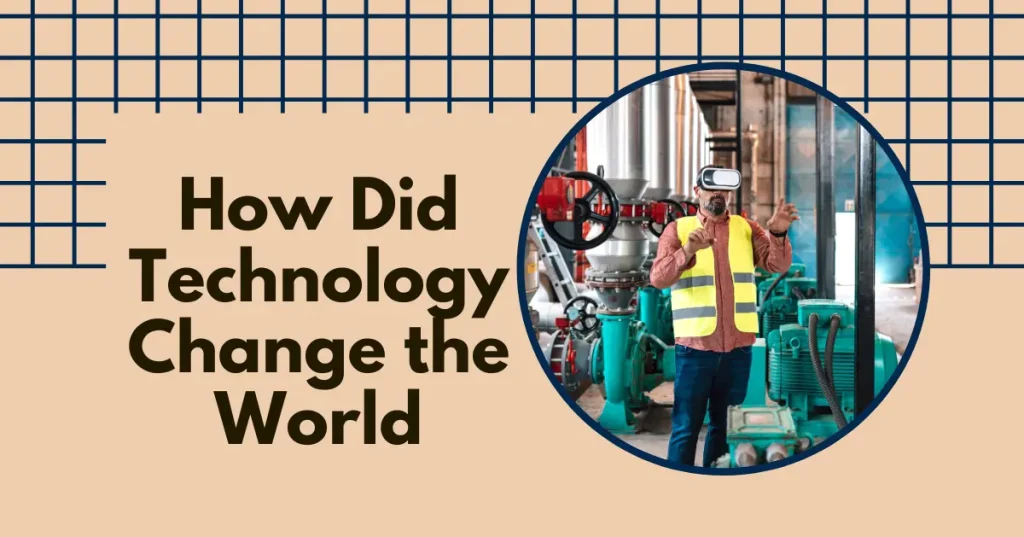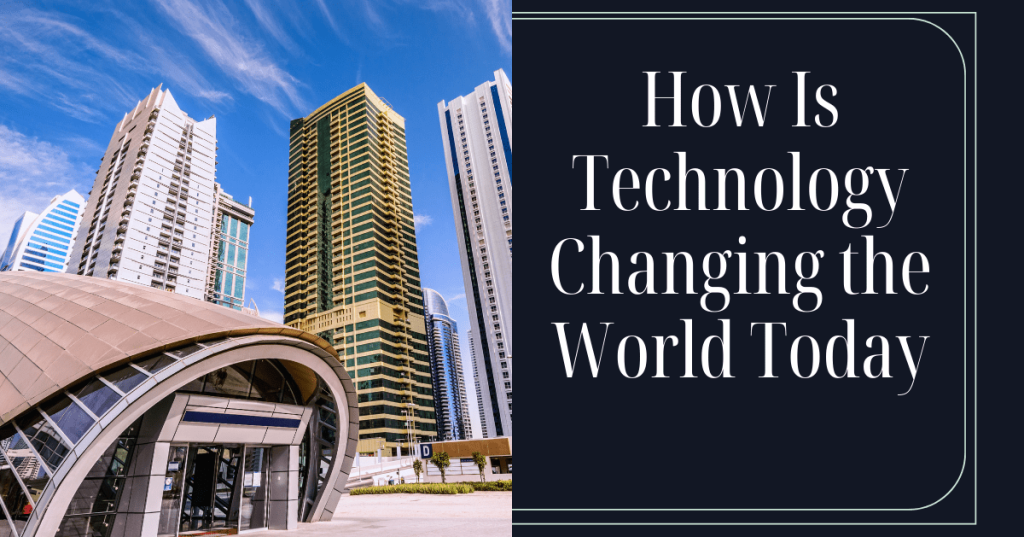Technology has changed society a lot. It helps us talk to each other easily and quickly. We can find information about anything online. Technology also helps businesses work better and make more money. It has improved healthcare and makes learning easier. But it also affects the environment and can sometimes cause problems. Overall, technology has made life different in many ways, both good and bad.
Technological advancements are important because they help us keep up with changes in how we live and work. It makes tasks easier and faster, like using smartphones or computers. Knowing about new technology inspires new ideas and helps us solve problems. When we understand technology, we can make better decisions about how to use it. This includes thinking about how it affects the world around us, like the environment and other people.
Communication and Connectivity
Communication and connectivity have undergone a remarkable transformation.
- Instant Communication: With technology, we can talk to friends, family, and coworkers instantly through messages, calls, and emails.
- Social Media: Platforms like Facebook, Instagram, and Twitter let us share our lives and stay connected with people all over the world.
- Global Reach: Technology has made it possible to connect with people from different countries and cultures, breaking down barriers and fostering understanding.
- Business Communication: Companies use technology to communicate with customers and colleagues, making work more efficient and collaborative.
- Access to Information: Through the internet, we have access to a vast amount of information, allowing us to stay informed and connected to the world around us.
- Convenience: Technology has made communication more convenient than ever, with tools like video calls and messaging apps allowing us to connect anytime, anywhere.
Economic Shifts
Economic shifts caused by technology have changed how we work and do business. Technology helps machines do tasks, which can change the kind of jobs people do. Many people now buy things online instead of going to stores, thanks to websites like Amazon.
We can also manage our money online with things like digital banking and mobile payment apps. Technology connects markets all over the world, making it easier for businesses to sell and for people to buy things from anywhere.
Apps and websites have also made it easier for people to find work, like driving for Uber or doing freelance jobs online. Overall, technology has made the economy different by creating new jobs, changing how businesses work, and making things more convenient for everyone.
Healthcare Revolution
The healthcare revolution brought by technology has made big changes in how doctors care for patients. Technology helps doctors find better treatments and medicines to help people get better faster. Now, doctors can talk to and treat patients online, which makes it easier for people to get medical help, even if they can’t go to the doctor’s office.
Wearable devices like smartwatches and fitness trackers help people keep track of their health and stay active. Doctors can use special machines like MRI and CT scans to see inside the body and find out what’s wrong. Technology also helps doctors keep track of patient’s medical history and share information easily. With the help of artificial intelligence, doctors can analyze data better and make smarter decisions about how to treat patients.
Education and Learning
- Online Learning Platforms: Accessible from anywhere with an internet connection. Offers a wide range of courses on various subjects. Allows learners to study at their own pace and convenience.
- Interactive Educational Tools: Educational apps and software make learning engaging and interactive. Incorporates games, quizzes, and multimedia content to enhance understanding. Provides immediate feedback, fostering active learning.
- Immersive Learning with Virtual Reality: Virtual reality technology creates immersive learning environments. Students can explore simulations and interactive scenarios. Enhances understanding of complex concepts through experiential learning.
- Global Access to Education: Technology breaks down geographical barriers to education. Enables people from different parts of the world to access quality learning resources. Increases opportunities for lifelong learning and continuous skill development.
- Personalized Learning Experiences: Adaptive learning technologies tailor educational content to individual needs. Allows for customized learning paths based on student’s strengths and weaknesses. Promotes student engagement and academic success.
- Empowering Teachers with Tools: Technology provides educators with resources to create dynamic and interactive lessons. Facilitates communication and collaboration among teachers and students. Enhances teaching effectiveness and fosters a supportive learning environment.
Environmental Sustainability
Renewable Energy Sources
Solar, wind, and hydroelectric power harness natural resources like sunlight, wind, and water. They don’t produce harmful emissions like fossil fuels, helping to fight climate change. These clean energy sources offer a sustainable way to generate electricity for homes and businesses.
Green Technologies
Energy-efficient appliances and buildings use less energy, saving money and reducing pollution. Electric cars and public transportation cut down on harmful emissions from vehicles. By using these technologies, we can protect the environment and live healthier lives.
Waste Reduction and Recycling
Technology helps sort and recycle waste more efficiently, reducing the amount of garbage sent to landfills. Automated systems make recycling easier and more effective, ensuring that materials are reused instead of wasted. By recycling and reducing waste, we can conserve resources and keep our planet clean for future generations.
Precision Agriculture
Farmers use sensors and drones to monitor crops and soil health, allowing them to use water and pesticides more efficiently. This sustainable farming approach increases crop yields while reducing environmental impact. By adopting precision agriculture techniques, we can grow food more sustainably and protect natural ecosystems.
Environmental Monitoring
Remote sensing technology collects data on air and water quality, deforestation, and wildlife habitats. Analyzing this information helps scientists track environmental changes and identify areas that need protection. By monitoring the environment, we can take action to preserve ecosystems and safeguard biodiversity.
Circular Economy Initiatives
Technology supports the reuse and recycling of materials, reducing waste and conserving resources. In a circular economy, products are designed to be reused or repurposed instead of thrown away. By embracing circular economy principles, we can create a more sustainable society and minimize our ecological footprint.
Conclusion
Technology has changed our world significantly. It has made communication easier, improved healthcare, and transformed how we learn. Additionally, technology has created new job opportunities and made businesses more efficient. However, it also brings challenges like privacy concerns and environmental issues. Moving forward, it’s crucial to use technology responsibly.
By being mindful of its impacts and addressing challenges together, we can continue to benefit from its advancements. We must ensure that technology serves everyone and contributes positively to our society. With responsible innovation and collaboration, we can create a future where technology helps us.



